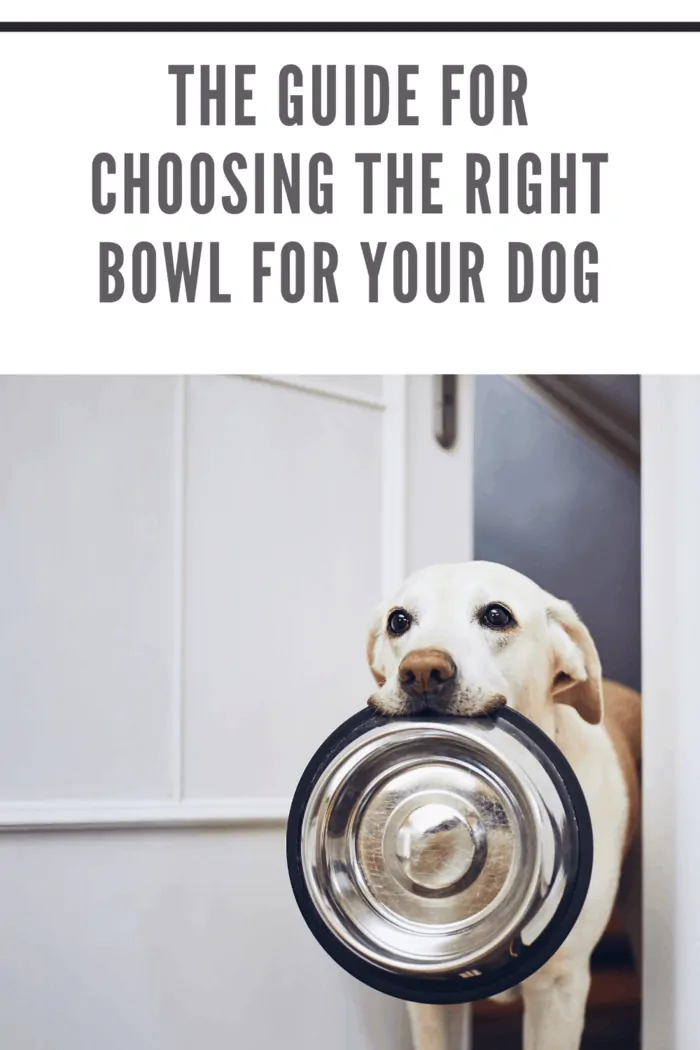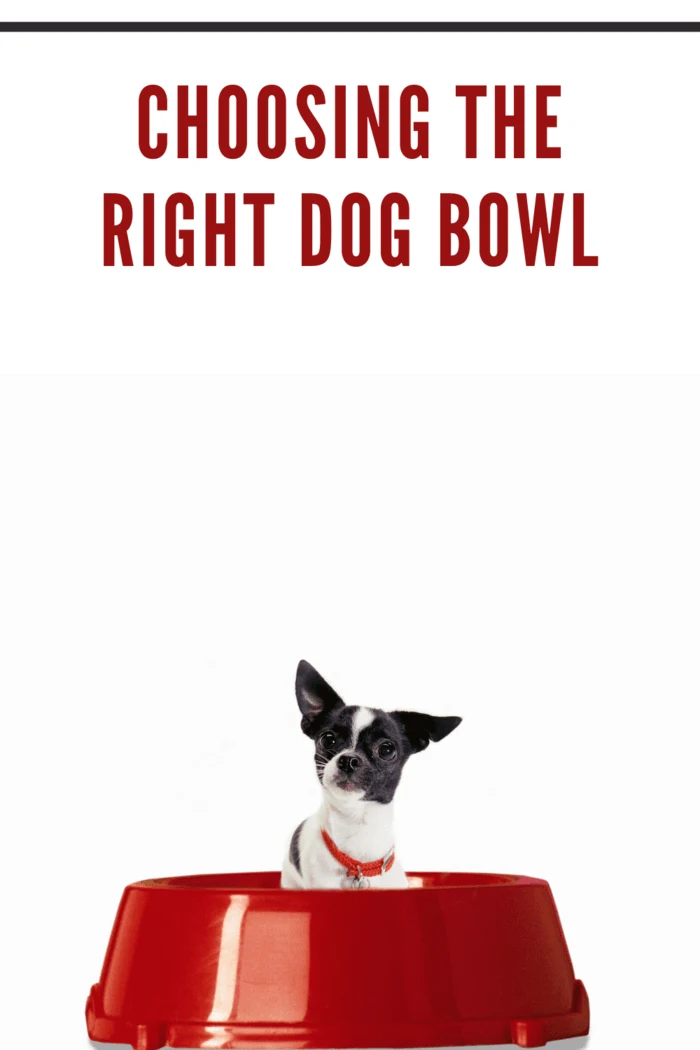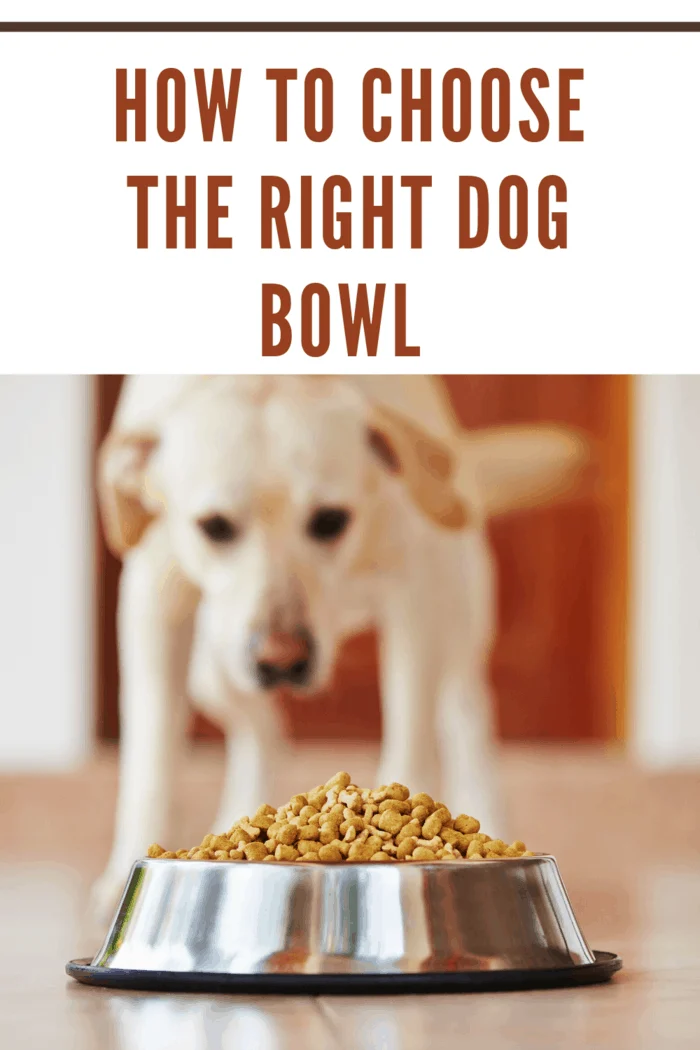Choosing the Right Dog Bowl
Food and water bowls are your top priorities when you’re welcoming a new dog into your home.
Whether you’re introducing an adult dog to your pack or you’re bringing a new pup home, it’s essential to have appropriate food and water bowls for them to use.
First-time dog owners might assume that choosing a food and water bowl is easy, but it requires more consideration than you might think.
Before you pick out your favorite color or design, make sure you consider the following:

1. Can your dog access the contents of the bowl?
Your first-choice dog bowls might match your décor or be inscribed with a fancy design, but they’ll be no good if your dog can’t access the contents!
A deep bowl with high edges could make it difficult for your dog to eat or drink, particularly if they’re a smaller breed.
When a dog not drinking water or leaves their food, people often assume their pup is feeling under the weather
However, the wrong choice of the bowl could be the culprit.
Pay close attention when your dog attempts to drink or eat to ensure they can access the contents of the bowl easily.

2. Should you use an elevated dog bowl?
Raised dog bowls are a popular choice amongst many dog owners.
When you opt for an elevated dog bowl, you can minimize the risk of your dog experiencing discomfort when they eat.
For many dogs, bending their neck downwards to eat or drink can cause pain.
In some cases, this will discourage the dog from using their bowls altogether.
By raising the bowl up, you can improve your dog’s posture while they’re eating and prevent them from lying down while they’re at their food or water bowl.
In addition to this, a raised dog bowl can make it easier for dogs to swallow their food, which reduces the risk of regurgitation and digestive issues.
3. Is the bowl too shallow?
Although a bowl that’s too deep can cause issues, a bowl that’s too shallow can be equally problematic.
Dogs with long snouts, such as Bull Terriers, Dachshunds, or Greyhounds, will find it tricky to pick up food from a shallow bowl.
Similarly, dogs with long, floppy ears, like Basset Hounds and Spaniels, will inevitably end up with their ears falling into their food and water if their bowls are too shallow.
4. Does the bowl move around?
Most dogs love dinner time, so don’t be surprised if your pup puts on an enthusiastic display every time you replenish their food bowl.
Many new dog owners are surprised to find their dog’s dishes on the other side of the kitchen within minutes, but this is a common problem if you choose a bowl that’s too lightweight.
Larger dogs will typically need heavier bowls, as they have more strength to move their dishes around.
Choosing a bowl with a non-stick base can help to reduce slippage, but selecting a ceramic or metal dish can be an effective way to prevent your dog from sending their bowl flying every time you feed them.

5. Are the bowls dishwasher-safe?
When you’re caring for your dog, there are lots of tasks you can’t avoid.
However, washing your dog’s bowls by hand is definitely one of them!
If you have a dishwasher at home, make sure you select dishes that are dishwasher safe.
That way, you can simply rinse them out after use and pop them in the dishwasher, rather than scrubbing them by hand.
This will save you a job and give you more time to enjoy yourself with your canine companion – so it’s a win-win situation for everybody.

When should you replace your dog’s bowls?
Once people find the right food and water bowls for their dog, they tend to use them for months or even years.
However, it’s important to consider your dog’s changing needs and update their bowls, bed, cage, and grooming equipment as it becomes necessary.
As your dog gets older, for example, they may experience more aches and pains.
If you aren’t already using an elevated dog bowl, now might be a good time to consider raising your dog’s food and water bowls.
Similarly, as your pup gets bigger, you may need to invest in a larger bed and cage.
By responding to your dog’s development, you can ensure that you’re providing them with the essentials they need to live a long, happy, and healthy life.

Comments
Post a Comment